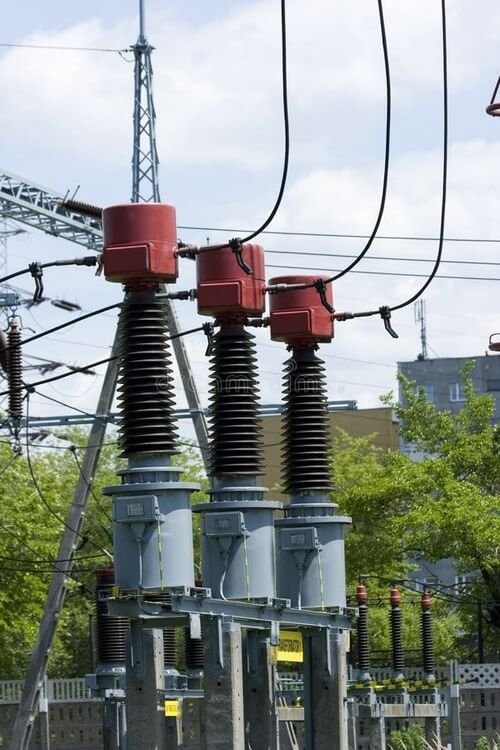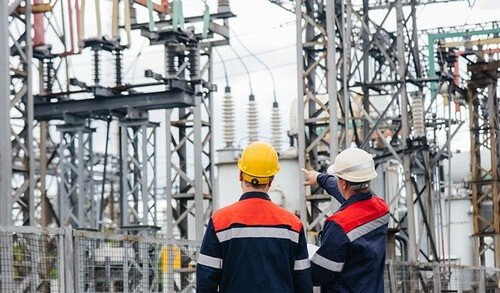The electrical infrastructure must be dependable, efficient, and precise not only more than ever before, but also to a degree exceeding the capability of any previous electrical-infrastructure development. Central to any well-functioning manufacturing plant, processing plant, or complex of industrial operations is an elaborate network of electrical power distribution systems which is the primary cause of continuity of operations. These systems are much more than just power delivery systems; they are the keystone on which industrial excellence of today rests.
The development of the distribution systems of industrial power has been changing significantly in the last ten years due to the growing automation, needs of digitalization, and the unstopping requirement of operational efficiency. The industrial facilities of today need electrical infrastructure that is able to meet the complex load profile, sophisticated control mechanisms and reliability that cannot be compromised even in the most demanding conditions.
The complex interaction between electrical distribution design and industrial performance has become a vital concept of facility managers, plant engineers and operations leaders who have discovered that power quality is directly proportional to production quality, equipment life and bottom-line profitability.
The Foundation of Industrial Power: Understanding Distribution System Architecture
In modern electrical power distribution systems in industrial settings, a multiplicity of voltage levels are utilized with each voltage level serving a given operational purpose. The main distribution loop is usually fed with power at medium voltage of between 4.16kV and 35kV depending on the size of the facility and power demand. Such incoming power has to be systematically de-energized and brought out to all parts of the facility to feed many loads, including huge motor drives to delicate control systems.
The design starts with power substations that act as the point of desperation between the utility grid and industrial facilities. Primary switchgear, protection devices, and metering devices are located in these substations to provide reliable safe energy transfer. Design of these substations has a direct influence on the overall operational capacity of the facility and, therefore, correct specifications of the substation as well as installation is the key to future success.
The distribution systems in industrial facilities operating at medium voltage often use the metal-clad switchgear which offers flexibility in its operation as well as improved safety. Such systems will include advanced protection programs, such as: differential relays, overcurrent protection and arc flash suppression devices that safeguard equipment and people and reduce operational interruptions to the minimum.
The conversion of medium voltage into the utilization voltages is made in terms of wisely chosen transformer and substation design. Not only is it necessary to size these transformers to match steady-state loads but also need to match the dynamic needs of industrial processes such as starting currents of the motors, harmonic loading of variable frequency drives, and the possibility of future expansion requirements.
Power Quality Considerations in Industrial Distribution
Electrical systems used in industrial processes impose special requirements that are far beyond merely delivering power. The new production machinery, especially those that have highly automated systems and control systems demand very clean and stable power to work smoothly. Voltage variation, frequency change and harmonic distortion may lead to problems in production quality, equipment failure and expensive downtime.
Quality monitoring of power has been given a new character of being a reactionary maintenance instrument to proactive operational modality. Advanced monitoring systems have become available to offer real-time monitoring of the quality of voltages, the harmonics of currents, and power factor conditions all along the distribution network. Such data provides predictive maintenance and is used to locate possible problems before they affect production.
The installation of power factor correction systems in industrial distribution systems has been made more and more significant with facilities aiming to maximize their electrical efficiency. Such systems do not only lower utility demand charges, but also enhance regulation of voltages, as well as minimise losses across the entire distribution system.
Strategic Design Principles for Industrial Distribution Networks
Load Analysis and System Sizing

Proper load analysis forms the cornerstone of effective industrial distribution system design. This analysis must consider not only the steady-state power requirements of installed equipment but also the dynamic characteristics of industrial loads. Motor starting currents, regenerative drives, and cyclic loading patterns all influence the sizing and configuration of distribution equipment.
The methodology for load analysis has evolved to incorporate sophisticated modeling techniques that account for load diversity, coincidence factors, and growth projections. Modern facilities often experience significant load additions throughout their operational lifetime, making scalability a critical design consideration from the initial planning stages.
Electrical substation transformer sizing represents one of the most critical decisions in distribution system design. These transformers must accommodate not only the calculated load requirements but also provide adequate capacity for future expansion while maintaining acceptable voltage regulation under all operating conditions. The selection of transformer impedance, cooling methods, and protection systems directly impacts both initial costs and long-term operational performance.
Reliability and Redundancy Strategies
Industrial operations increasingly demand higher levels of electrical system reliability, often requiring availability levels exceeding 99.9%. Achieving these reliability targets requires careful consideration of redundancy strategies, including duplicate feeders, automatic transfer systems, and backup power generation capabilities.
To isolate electrical faults to the smallest possible system segment, we’re implementing selective coordination throughout the protection system. This minimizes the impact on overall facility operations. This requires careful coordination of protective device settings and the selection of appropriate interrupting ratings for all system components.
Substation equipment selection plays a crucial role in achieving reliability objectives. Modern switchgear designs incorporate enhanced insulation systems, improved contact materials, and advanced monitoring capabilities that extend equipment life and reduce maintenance requirements while improving operational reliability.
Advanced Technologies Transforming Industrial Power Distribution
Digital Integration and Smart Grid Technologies

The convergence of traditional electrical systems with digital technologies has revolutionized industrial power distribution. Smart grid technologies now enable real-time monitoring, automated switching operations, and predictive maintenance capabilities that were unimaginable just a decade ago.
Digital protective relays have replaced traditional electromechanical devices, providing enhanced protection capabilities, communication interfaces, and diagnostic information that improves both system protection and maintenance efficiency. These devices can communicate system status, fault information, and operational data to central control systems, enabling rapid response to system disturbances.
Energy management systems integrated with distribution automation provide facility operators with unprecedented visibility into their electrical systems. These systems can optimize load distribution, manage demand profiles, and coordinate with renewable energy sources to minimize operational costs while maintaining system reliability.
Motor Control and Drive Integration
Modern industrial facilities rely heavily on variable frequency drives and sophisticated motor control systems that place unique requirements on the electrical distribution infrastructure. These systems generate significant harmonic currents, so you must manage them properly to prevent interference with other facility systems.
The integration of intelligent motor control centers within the distribution architecture provides enhanced control capabilities while simplifying maintenance and troubleshooting procedures. These systems incorporate advanced protection features, communication capabilities, and diagnostic tools that improve both operational efficiency and equipment reliability.
Power quality solutions specifically designed for drive applications have become essential components of modern distribution systems. These include harmonic filters, isolation transformers, and power factor correction systems that ensure clean power delivery while minimizing the impact of nonlinear loads on the broader electrical system.
Maintenance and Lifecycle Management Strategies
Predictive Maintenance Technologies
Shifting from reactive to predictive maintenance strategies is the modern way of maintaining industrial electrical systems. Advanced diagnostic technologies now enable maintenance teams to identify potential equipment failures well before they occur, minimizing unplanned downtime and extending equipment life.
Partial discharge testing of switchgear and transformers provides early warning of insulation degradation, while infrared thermography identifies developing hot spots that could lead to equipment failure. Oil analysis for liquid-filled transformers reveals internal conditions and helps optimize maintenance intervals.
Power quality monitoring systems provide continuous assessment of system health, identifying trends that may indicate developing problems. This data enables maintenance teams to schedule interventions during planned outages rather than responding to emergency failures.
Asset Management and Replacement Planning
Effective lifecycle management of electrical distribution assets requires comprehensive tracking of equipment condition, performance history, and replacement costs. Modern asset management systems integrate condition monitoring data with financial planning tools to optimize replacement timing and budget allocation.
The economic analysis of distribution system investments must consider not only initial capital costs but also ongoing maintenance expenses, energy losses, and the cost of system downtime. This comprehensive approach ensures that investment decisions align with overall facility profitability objectives.
Future Trends and Emerging Technologies
The industrial electrical distribution landscape continues to evolve rapidly, driven by advancing technologies and changing operational requirements. Microgrids are becoming increasingly common in industrial applications, providing enhanced reliability and the ability to integrate renewable energy sources while maintaining grid independence during utility outages.
Energy storage systems integrated with distribution networks offer new opportunities for load management, power quality improvement, and backup power provision. These systems can provide rapid response to power quality disturbances while reducing peak demand charges and providing emergency power during outages.
The integration of artificial intelligence and machine learning technologies with distribution system monitoring promises to revolutionize predictive maintenance and system optimization. These technologies can identify patterns in system behavior that may not be apparent to human operators, enabling more effective maintenance strategies and improved operational efficiency.
Conclusion
Electrical power distribution systems represent the critical foundation upon which modern industrial operations depend. The sophisticated integration of power substations, transformers, protection systems, and control technologies creates the reliable, efficient infrastructure necessary for competitive industrial operations. As facilities continue to evolve toward higher levels of automation and digitalization, the importance of properly designed and maintained electrical distribution systems will only continue to grow.

Success in industrial operations increasingly depends on the seamless integration of electrical infrastructure with production processes. Facilities that invest in advanced distribution technologies, comprehensive monitoring systems, and predictive maintenance strategies position themselves for long-term competitive advantage through improved reliability, reduced operating costs, and enhanced operational flexibility.
For over 75 years, IET has been East Africa’s trusted partner in delivering comprehensive electrical engineering solutions across Kenya, Uganda, and Tanzania. Our expertise in power transmission and distribution, MV switchgear, transformers, and intelligent control systems positions us uniquely to help industrial facilities achieve their operational excellence goals. With our proven track record of completing complex projects and delivering innovative electrical solutions, we invite you to discover how our comprehensive approach to industrial power distribution can transform your facility’s performance. Contact IET today to schedule a consultation and learn how our expertise can drive your industrial success.
